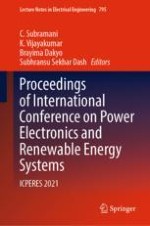2022 | OriginalPaper | Buchkapitel
Recognition of Partial Discharge Signal Using Deep Learning Algorithm
verfasst von : J. Ashmin Sugaji, M. Ravindran, R. V. Maheswari
Erschienen in: Proceedings of International Conference on Power Electronics and Renewable Energy Systems
Verlag: Springer Singapore
Aktivieren Sie unsere intelligente Suche, um passende Fachinhalte oder Patente zu finden.
Wählen Sie Textabschnitte aus um mit Künstlicher Intelligenz passenden Patente zu finden. powered by
Markieren Sie Textabschnitte, um KI-gestützt weitere passende Inhalte zu finden. powered by
